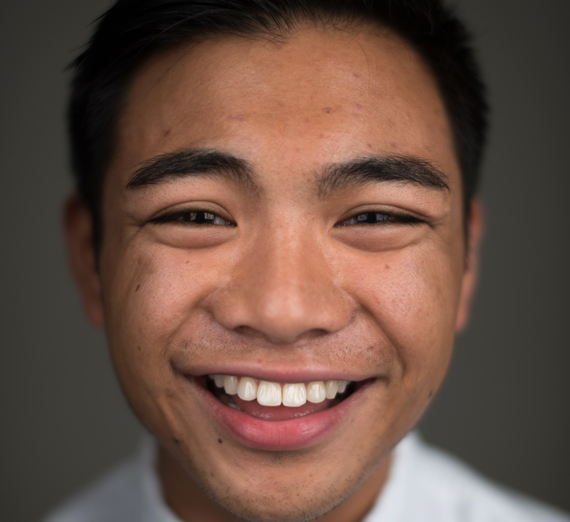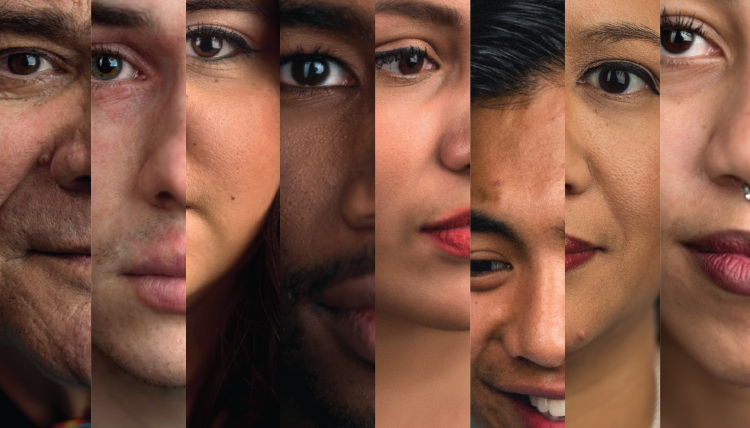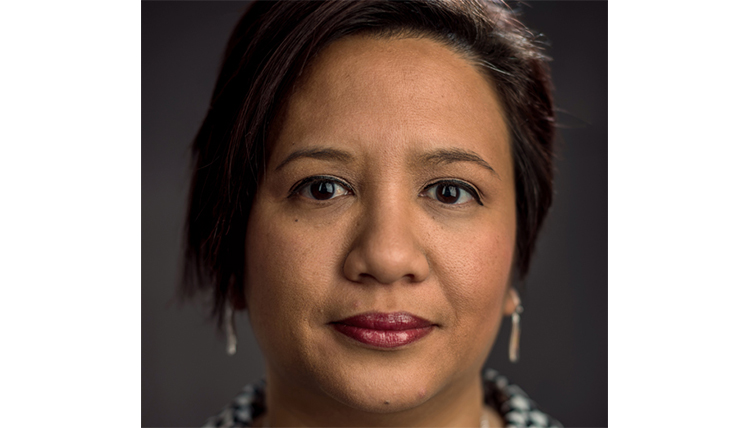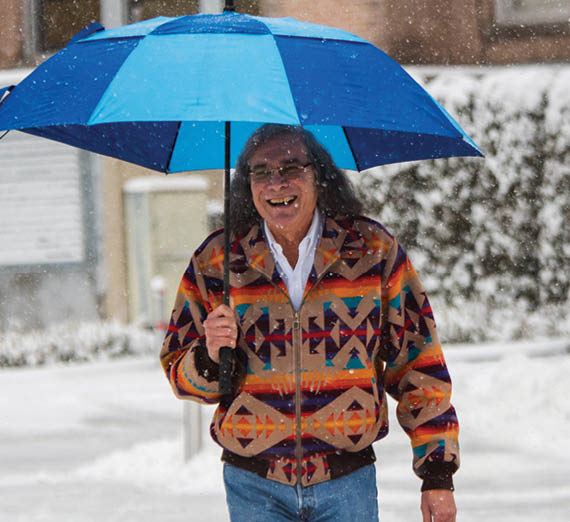The Race Issue - Higher Expectations

Seizing Opportunity
A first-generation college student with Filipino parents, Carlo Juntilla (’18) engaged himself in many student activities when he first arrived at Gonzaga. Of all the clubs and events, “The place where I felt I belonged the most was in GSBA as chair of multicultural events,” he says.
He picked up where Dawson left off with leading Courageous Conversations and put together an event called Where You Belong, geared to first-year students. When a student thanked him for his work, he saw a glimpse what it might be like to take a bigger leadership role. “I saw GSBA as a platform to address the campus as a whole, rather than small pockets of people who come to certain events.”
His campaign for president focused on inclusion over diversity, which he believes will also have a positive impact on the retention of students, staff and faculty members of color. He’s fully aware that inclusion can be as challenging to address as diversity or cultural competency: The ultimate task for higher education is determining how to adapt to that mindset.
Juntilla said the route to celebrating a campus where everyone feels a sense of belonging would start with First-Year Experience to ensure that the language of orientation leaders is inclusive so every new student finds a welcoming community here. He also saw an opportunity to impact the recruitment of future students.
Juntilla is continuing conversations with faculty and university leaders to ensure cultural competencies remain a priority, and that students of color in coming years can have different stories to tell than those who finished with feelings of regret or frustration.
“With racial tensions high and greater pressure on the institution, I see so much opportunity,” he says.
Both Dawson and Juntilla have supported a grass-roots effort to develop a degree program related to critical race and ethnic studies. In February 2018, they participated in a symposium convened by the women and gender studies department for development of this vision by students, alumni, staff and faculty. Based on the insights generated by the symposium, the proposed programmatic needs, including administrative and financial support, were submitted to the College of Arts and Sciences for consideration.*
Just as student-protesters of the ’60s played a major role in exposing the devastation of war, university students today are a loud voice against systemic racism. Beyond simply providing an academic context for discussion, how are today’s colleges equipping their students?
Many universities are implementing diversity seminars designed to help students talk more comfortably about race. At the University of Oklahoma, new students must take five hours of training where they learn basic principles of respectful dialogue and then practice those conversations. Elon University in North Carolina began a campus residential initiative that placed students of diverse backgrounds into housing together to foster inclusivity. Within these “neighborhoods,” students, faculty and staff share dinners to talk about multicultural concerns and improving the campus climate.
Not all students (or professors, or parents) believe this is necessary. Many view the discussion of microaggressions (terms considered offensive), to be a liberal agenda based on “political correctness.” Conservatives often say that universities have become increasingly liberal, and to counter the dialogue, seek to bring in acclaimed conservative speakers who represent a more traditional viewpoint.
How do Jesuit schools seek solutions to the age-old issue of race? Even though Loyola University in New Orleans and Spring Hill College in Mobile, Alabama, were two Southern schools central to advancing racial justice in the era of Jim Crow segregation, Jesuit schools face the same challenge 60 years later: not only to “preach justice and charity, but to act it out in their daily activities.”
“Jesuit institutions tend not to acknowledge that they are predominantly white institutions,” writes Alex Mikulich in America magazine, a national Catholic publication. “There are several reasons for this … [and] none constitutes a good reason to ignore this reality. The rationale for Jesuit institutions to develop bold initiatives for both diversity and racial equity is deeply rooted in Jesuit values … enshrined in a Catholic sense of respect for human dignity. ... Yet respect is not enough. A common gap in multicultural programming is that it does not address the relationships between privilege and oppression that pervade society.”
“I would like to see us experience the spiritual significance of human diversity by linking practices of inclusion, equity and intercultural awareness to our educational mission as a Jesuit social apostolate,” wrote Raymond Reyes to the Gonzaga community last fall. Responding to the stories shared by students of color who felt devalued in their experience here, he challenged students, faculty, staff and administrators to “be alert and vigilant to God’s presence in all our relationships.”
*At the time of printing, Interim Academic Vice President Elisabeth Mermann-Jozwiak had shared her support, suggesting that prompt selection of a visiting scholar in race and ethnic studies would help expedite program development.
A Commitment from Faculty and Staff
“We think Eli Ashenafi is right to be disappointed in a college education consisting of classes that don’t address the unique experiences of men and women of color,” wrote faculty members to the Gonzaga Bulletin the week after Ashenafi’s letter appeared. “This is a failing of professors who design individual courses and faculty committees that determine what is crucial to an undergraduate education.”
As the history professors went on to list the many multicultural course offerings in their department, they showed their point – that they were listening. The authors also inadvertently drew attention to what students of color already knew: that they would have to seek out educational offerings rather than expect cultural dynamics to be included in classes as a standard.
“I believe there’s a tendency for some professors to fear addressing topics they may see as explosive or that they feel ill-prepared to discuss,” says Jonathan Rossing, chair of the communication studies department. “Unfortunately, that silence sends a message that these conversations aren’t important. Avoidance also perpetuates a culture where faculty of color shoulder the burden of educating students about topics of racial diversity and justice.”
He continues: “Intentionally and mindfully incorporating conversations on racial identity and justice across the curriculum is an important step. But if faculty colleagues don’t know where to begin, an easier step is to be present at student-sponsored events. Faculty support means a lot to students who may not always feel like they belong. If we’re present and listening, we can learn a great deal about how to best educate whole students.”
Faculty engagement is just one of the university’s items in a plan of action to address students’ concerns. Last year, priorities identified by the President’s Council on Equity, Inclusion and Intercultural Awareness elevated the need for a full-time expert in this work.
The day Joan Iva Fawcett received an offer from Gonzaga to be its assistant dean of Diversity, Inclusion, Community and Equity (DICE), she also learned about the student-produced video that was stirring up conversations across campus on topics related to diversity. In it, Gonzaga students of color shared their frustrations with the university via YouTube, drawing public attention to a challenging concern.
The sentiment was nothing new to Fawcett, who formerly worked at the University of California-Berkeley.
When asked how student activism at Gonzaga compares to other campuses, she says our students are “very representative of experiences across the nation, but in a GU kind of way … which means they’re more considerate and relational. [Zags] don’t rock the boat as much, but I could see it happening if things don’t change.”
Eager to get back to diversity work at a mission-focused and values-based institution, Fawcett says her first priority upon arrival was to meet with concerned students and help clarify their requests of leaders.
Those discussions have led to identifying a number of priorities and actions, and Fawcett says, “It’s time to be intentional about this work, in a strategic and integrated way.” (See DICE priorities below.)
Based on student discussions and the results of the campus climate survey, Fawcett believes the biggest opportunity for improvement at Gonzaga is better communication. She says students are not being unreasonable – they’re not expecting the number of faculty of color to skyrocket overnight – but “they do need to see a good faith effort from the university that it is doing its part to increase diversity, equity and inclusion.”
“I believe educating and engaging students in the process of social change is just as important as delivering the outcomes, which will take time, resources and leadership.”
As for the DICE program itself, Fawcett’s team is developing a more robust infrastructure to serve more students. Next year will feature weekly events, speakers and art activities focused on social justice and intersecting identities. Fawcett envisions more collaboration with faculty, offering co-curricular initiatives that complement what students are learning inside the classroom. DICE, along with Housing and Residence Life, also hired social justice peer educators to facilitate diversity-focused programs in the residence halls.
“Conversations used to be limited to the ‘safe spaces’ designated for underrepresented student groups,” says Fawcett. “We’re still doing that, but we’re also focusing on the cultural fluency of all students. This is a skill set, just like learning time management – this prepares you for your career and life overall.”
DICE Priorities
- Strategic planning for the University Multicultural Education Center and the Lincoln LGBTQ+ Resource Center around three pillars: mentoring, programming and intercultural development.
- Helping to develop a campus-wide reporting tool and response protocol for bias incidents, including a support network for those who have been impacted.
- Supporting the cultural clubs to connect and strengthen underrepresented student groups.
- Further action with the Council for Equity, Inclusion and Intercultural Awareness on increasing the diversity and competency of Gonzaga members.
- Working with Human Resources and the Center for Teaching & Advising to assist with staff and faculty development on addressing diverse student needs.
- Addressing intersecting and invisible forms of diversity, such as socioeconomic status, ability, sexual orientation, religion and spirituality, etc.
To keep up on the latest efforts and more about diversity, equity and inclusion, visit gonzaga.edu/diversity.
- Diversity & Inclusion
- Academics
- College of Arts & Sciences






